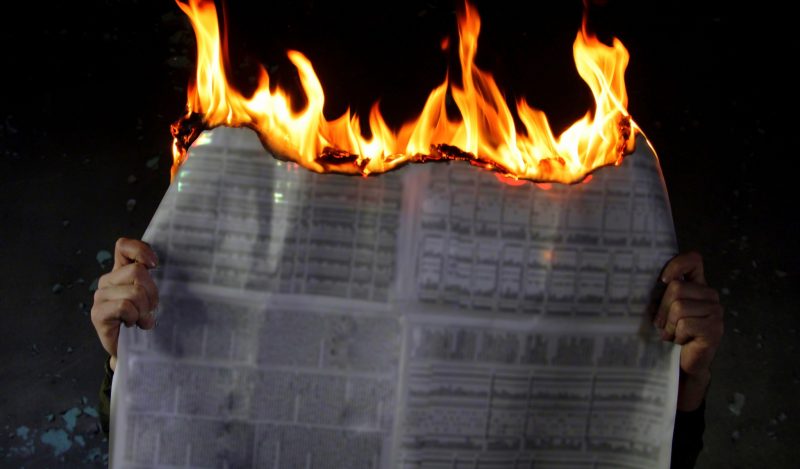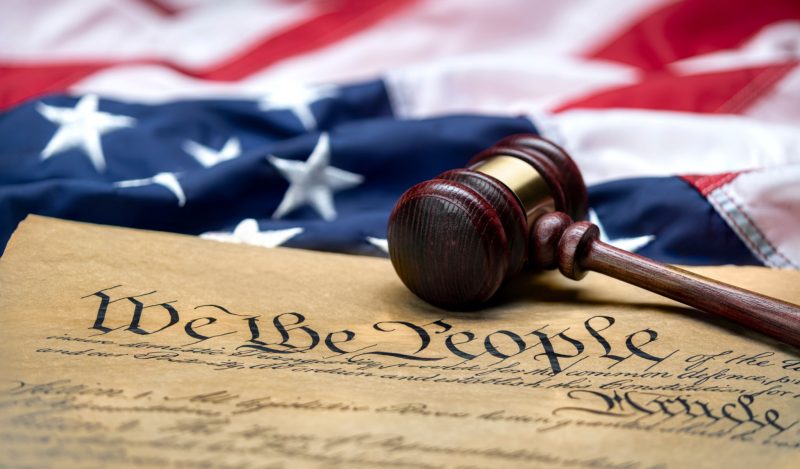The COVID vaccines worked. They saved us. They preserved our healthcare system, helped end the pandemic, and advanced our return to normal.
The vaccines worked in the way Franklin Roosevelt’s New Deal worked. The New Deal saved us. It preserved the capitalist system, helped end the Great Depression (with an assist from the death and destruction of World War II), and advanced the country’s postwar return to normal.
So we are told. That’s the narrative. That’s how history is and will be written. That’s how the younger generation are and will be taught.
The message is all around us. A Zoom call in spring 2023 included a co-worker wearing a t-shirt which read “Hug me, I’m vaccinated.” The shirt, though a pandemic purchase, was not untimely. Its boast continues to trend as a proud post-pandemic declaration. It is a statement of success, a continuous announcement of achievement, lest we forget: “This is how we did it. This is how we beat the pandemic, despite anti-vaxxers among us.”
Ironically, the pro-vax pride of the “Hug me” t-shirt continues to beam in the very edicts rescinding the vaccine mandates. Compulsory experimentation has been lifted in broadcasts teeming with the pride of success. With little sense of self-awareness or inkling of fallibility, and no whiff that anything went other than according to plan, the content curators of our mass narratives report that the product and its accompanying biomedical surveillance performed as advertised, as did the public health apparatus which forced us to be free. The edicts rescinding the mandates read like a how-to manual for distributing participation trophies in kiddie soccer: ‘Take pride! We all did great!!’
Consider the following communiqué from a university leader. It explains “the decision to lift the vaccine mandate” by referencing “increased rates of vaccination and sustained low COVID-19 levels.” Its pride is unreserved and explicit: “We can all take pride that we are able to reach this milestone in great part because of our high levels of vaccination.” Its gratitude is for compliance: “I want to thank all members of the community for their cooperation and compliance with the vaccination mandate.”
Like all good narratives of pride in success, the edict recounts the historical milestones illumining the path to victory: “When the vaccines became available in December 2020, it was a two-time alumnus who made history as the first in the country to get the shot. In March 2021, we launched the #VaxUp campaign and worked with our government partners to host vaccination sites that put over half a million shots in arms.”
Half a million shots, comrades! Be proud. But also be vigilant, the edict continues. The struggle must persist into the post-mandate milieu: “To be sure, it’s important to recognize that the pandemic is not over; we continue to encourage and urge all students, faculty and staff to stay up to date with vaccinations.” The whole thing ends in gratitude for the performance of the entire politburo, “especially recogniz[ing] the leadership of our School of Public Health and Health Policy; the Campus Coronavirus Liaisons and Campus Location Vaccine Authority . . .; the Office of Environmental Health, Safety and Risk Management . . . public safety officers . . .,” etc., etc.
Content curation is what we now call this type of dissemblance. Content moderation is another of our monikers. Across all such forms of linguistic cosplay, however, history is littered with exhibitions of pride in the success of failures.
Consider the White Sea Canal Project. Prisoners dug the canal in the early 1930s across the 141 miles separating the White Sea from the Baltic Sea. Much of the work was done by hand, with picks and shovels. Tens of thousands died. And the canal, once complete, didn’t really work. It was too narrow and shallow for most commercial traffic, the infrastructure version of a leaky vaccine for a highly mutable virus. Yet it was a huge success. Intellectuals and artists dubbed the Writers Brigade, led by Maxim Gorky, crafted the official narrative.
They published a glowing account of masses of men building the marvels of modern infrastructure and, in the process, being remade and redeemed through the herculean efforts of their own labor. Stalin contacted each of them to express pride in the success of the project. And, of course, he thanked each for their compliance.
Similar exhibitions of pride in the success of failures characterize narratives in American texts.
One of the pillars of the New Deal’s First Hundred Days was the National Recovery Administration (NRA). It was led by Hugh Johnson, a retired Brigadier General who had directed the Selective Service Act in The Great War. The choice of Johnson to lead the NRA was no accident. Franklin Roosevelt had promised peacetime “leadership of this great army of our people dedicated to a disciplined attack upon our common problems.”
The look of a civilian army attacking the downturn is captured in an NRA parade in 1933. Thousands of Americans marched in lockstep up Broadway in New York City, passing the viewing stand from which Johnson nodded his approval of NRA “troops.”
In reality, the NRA created a sclerotic economy. It cartelized vast swaths of American industry. It all but prohibited innovation and business creation. It kept prices artificially high and kept production artificially low, putting the talents and skills of the American people to less productive use. Penalties were swift for non-compliance, as when small business owners dared lower prices. Over a thousand NRA enforcement officers fined, arrested, and even jailed the likes of Jacob Maged. His crime was to charge 35 cents, rather than 40, for dry cleaning pants.
Acknowledged shortcoming of the NRA bemoans less its prohibitions and compulsions than its lack of tighter central control. The government was not coercive enough, leaving too many decisions in private hands, as in this telling: “The idea of trying to overcome the depression by relying on voluntary cooperation between competing businesses and labor leaders had collapsed in the face of individual self-interest and greed.” The narrative is akin to bemoaning the lack of a selective service-like vaccine mandate, as recently suggested on NBC airwaves. It is “psychotic,” the host explained, to have people “walking around lawfully unvaccinated,” like charging too cheap to dry clean outerwear.
Many NRA stories, as in this text, praise the efforts to “coordinate prices, regulate production levels,” and “curtail ‘cutthroat competition.’” The narrative lauds “reasonable wages and hours” and the “end of child labor,” all of which earned businesses “the right to display a placard with the NRA’s Blue Eagle, showing their cooperation in the effort to combat the Great Depression.” The semblance of pride in the success of this failure concludes, “The programs of the First Hundred Days stabilized the American economy and ushered in a robust though imperfect recovery.”
“Hug me, I’m NRA. I have a Blue Eagle.” “Hug me, I’m vaccinated. I have a passport.” It’s the same message. It’s the same cosplay – beguiling and dissembling at once.
So many of our narratives contort public policy failures into a simulated pride for apocryphal success, incidentally acknowledging the imperfections in order to cover the bodies. From the initial days of the lockdowns, there were way too many people with paychecks talking. All the voices on all of our telescreens enjoyed uninterrupted direct deposit while aggressively advocating the closure of tens of thousands of small businesses – first to flatten the curve, then to slow the spread, then to await the vaccines.
Somewhere in there businesses just disappeared. Poof. Decades of the blood, sweat, and tears of entrepreneurial Americans gone.
The accusatory pimps in corporate media helped conduct a mass struggle session with messaging like, “We’re all in this together.” Their “democratic method” was but a take on Mao’s “unity – criticism – unity” approach to resolving contradictions among the people, surrounding and injecting deep-seated guilt into the non-compliant. They never missed a paycheck, as massive wealth redistributed upward. The destroyed small business owners are the modern-day Jacob Mageds, largely lost to history, certainly not the protagonists of our public telling of events. Most no longer even warrant a footnote.
“Too many people with paychecks talking.” That should have emblazoned our t-Shirts from day one. Instead, the content curators of our vaccine narratives now act like Stalin, smiling a farcical smile of success from an undersized steamboat, one shallow and narrow enough to fit through the largely inoperable White Sea Canal.
Throughout spring 2023, I have seen a woman walking to work on many mornings. As I drive in one direction, she walks in another. She walks alone, obviously outside. She is masked. I have never interacted with her. But I have come to respect her. Her choice to mask while walking alone is a form of cosplay beyond reason. But to think only in those terms is to think with blinkers on. The respect is for her commitment, not her judgment. That type of commitment is what drives narratives. It’s what crafts public understandings.
The numbers, no doubt, support a counternarrative. Excess non-COVID deaths continue. The “epidemic of sudden deaths” is chronicled. Pfizer’s own trial data is exposed. The World Health Organization is informed of “an increase in severe myocarditis in neonates.” And demand for the vaccine is plummeting.
Yet those numbers – those real facts – have yet to overtake the prevailing narrative. The cosplay of pride in the success of the vaccine failure persists among authors of our public telling of events. That telling is clear: ‘Take pride, lots of shots so far. We have all done great.’ But there’s more to do, as always. More mRNA shots – for RSV and for influenza, for pregnant women and non-pregnant women, along with the development of yet unimagined vaccines “within one hundred thirty days” of a “potential” “significant biological incident.” The pride is definitely continuing until morale improves, and even if it doesn’t.
The facts have yet to overtake the narrative. And there’s no guarantee that they will.
Our Content Curator Representatives – the CCR – are massively insecure in their incessant celebrations of their pseudo-achievements. Their pride drives narratives. Their pride writes history. And it’s always pride month for them. They continue to determine how the younger generation are and will be taught.
The CCR are like the CCP. They’re like Lin Biao, Minister of Defense of the People’s Liberation Army. Biao delivered the keynote address at the Ninth National Party Congress of the Chinese Communist Party in spring 1969. The previous three years of China’s Great Proletariat Cultural Revolution had torn the country apart. Murders topped 100,000, civil wars bloodied provinces, and corpses floated in rivers.
But Biao beamed with pride in his keynote – the pride of success in this great failure. He, too, was a content curator, proclaiming the Cultural Revolution’s “great victory” – over “bourgeois,” “capitalist,” and all “unrepentant persons.” Like the masked woman walking alone, he, too, was committed. He drove narratives.
Cynicism is admittedly easy. So consider this a cautionary tale that facts do not write history. That’s why content curation, moderation, etc. is so important to the talking classes. It’s always their own pride month. And their insecurity drives their commitment. The boundlessness of the one begets the danger of the other.
Published under a Creative Commons Attribution 4.0 International License
For reprints, please set the canonical link back to the original Brownstone Institute Article and Author.









